The herring is a very underrated fish on our coast. Most typically it is used as bait for other more desirable game fish. However, in other parts of the world, such as England and Scandinavia, it is a prized delicacy with entire festivals dedicated to it. It can be served grilled, smoked, pickled, or even raw. Also, the herring roe (eggs) are a prized component of Japanese cuisine, and in my opinion are one of the tastiest seafoods I’ve ever had. While herring may not be held in high esteem here on Vancouver Island, they are a foundational part of the marine ecosystem. Everything eats herring, and if you want to preserve the creatures at the top, start with the humble herring.
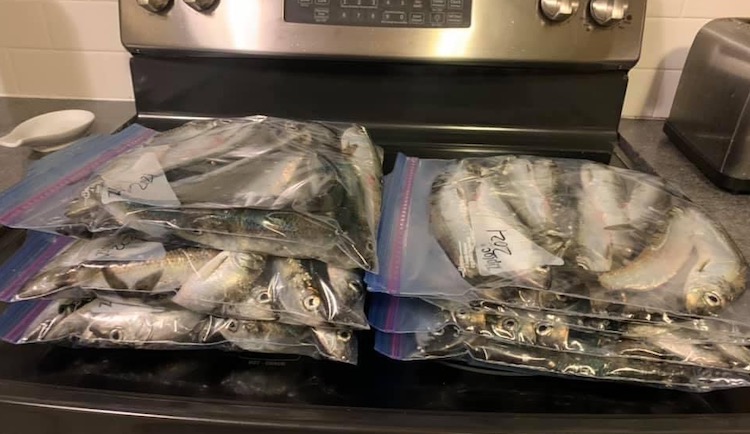
Herring Roe
At one time the herring roe fishery was one of the most lucrative fisheries in B.C. It was fueled by Japan’s willingness to pay astronomical prices for herring roe. Prices reached $5,000 a tonne in the 1980s. While the fishery certainly still exists, it is a shadow of what it used to be, today bringing in $150-$500 a tonne. As a young deckhand, I heard many stories of what it was like when the herring fleet would arrive at some small isolated port. The boats would disgorge dozens of thirsty crew- men with thousands of dollars in their pockets ready to hit the town. And while catching fish just for their eggs is perhaps not the best use for a keystone species, the history is interesting nonetheless.
Herring Spawn on Vancouver Island
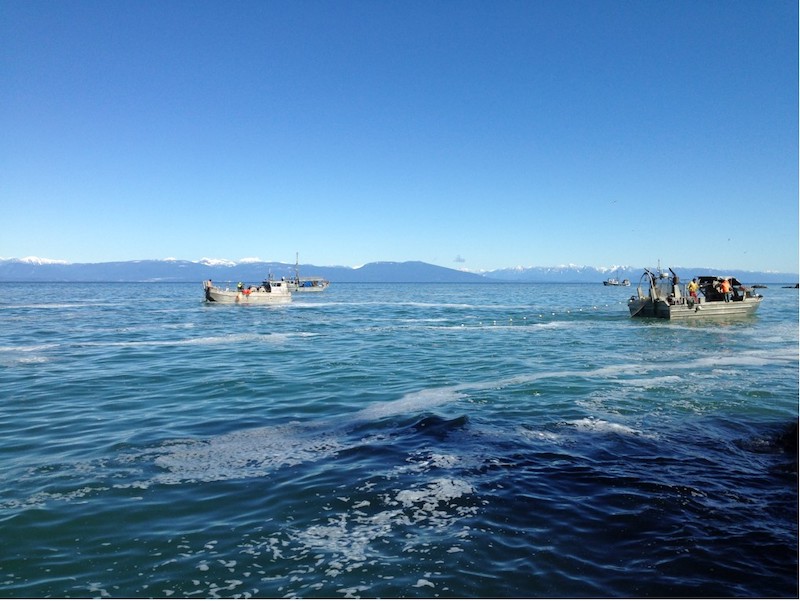
Every spring the vast schools of herring gather and spawn. The exact date and locations vary from year to year. A large herring spawn rivals any of nature’s great showcases. More birds and wildlife are attracted to the feast than even a large salmon run. The pure spectacle of hundreds of sea lions, seals, eagles, and other creatures engaging in a chaotic feeding frenzy is an incredible sight. I’ve had to back away from the water’s edge while jigging herring to avoid getting run over by sea lions stamped- ing in knee-deep water. If you’ve never seen a herring spawn or sampled herring eggs, you are missing out on a traditional part of coastal life.
Finding Herring Spawn Locations
I spend a lot of time in March driving around trying to intercept a spawn, looking for collections of seabirds and eagles or commercial herring boats working close to shore. When you hear the deafening barking of sea lions and the water is turning an opaque turquoise, you know you have found a spawn.
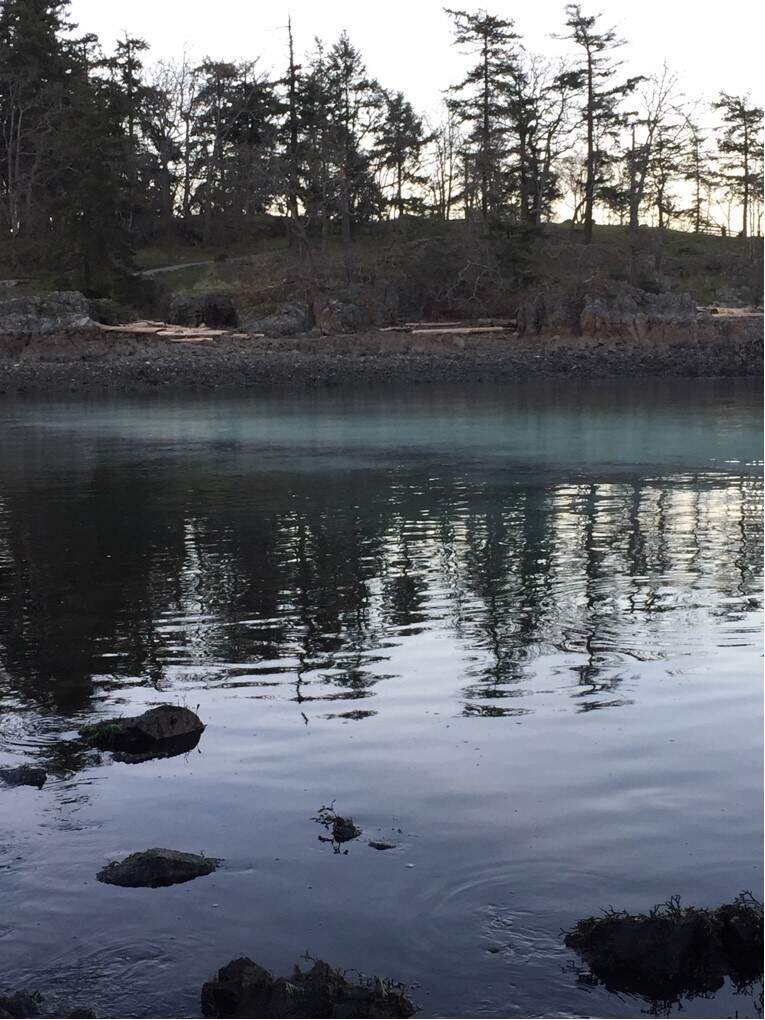
After arriving at their chosen location, the female herring release their eggs en masse into the water. The males also release their contribution, and this is what causes vast areas of ocean water to turn a milky colour. On a side note, a few years ago I saw several divers enter the water during a spawn. To this day I wonder, “Why did they do it?,” and perhaps even more so, “How long did it take to clean their gear off?” Perhaps it was research for the Department of Fisheries, but I couldn’t help pitying the divers as they emerged from the water, covered in herring milt and with thousands of herring eggs glued to their suits.
I find that actually catching the herring is much easier than finding them. There are several different basic methods.
Jigging For Herring—Sabiki Rigs

The most fun, in my opinion, is jigging for them. I use a light spincasting rod and herring jigs (also known as Sabiki jigs). They are essentially five or six small hooks with tinsel or yarn on them. Basically, they are like a bunch of fly fishing flies on short leaders, all attached to one main line. You cast them out into the school and slowly retrieve them. The longer they are in the water the more herring you can catch at the same time, so catch- ing three or four at once is not unusual. They fight fairly well for their size and are fun to catch, especially for children. There are even dedicated sabiki fishing rods that are hollow so one can reel in their sabiki jig into the rod to keep it ready for instantaneous use. I think these rods would be great for catching live bait from any passing school of herring. While it is uncommon these days, mooching a live herring is a classic way of salmon fishing, and it’s something that I would love to try.
Herring Rake
Another historic method of collecting herring is with a herring rake. This is essentially a long pole with a row of sharp “teeth” typically made of nails. I’m told that there are a few herring rakers still active in Georgia Strait, but, sadly, it seems it is another disappearing tradition.
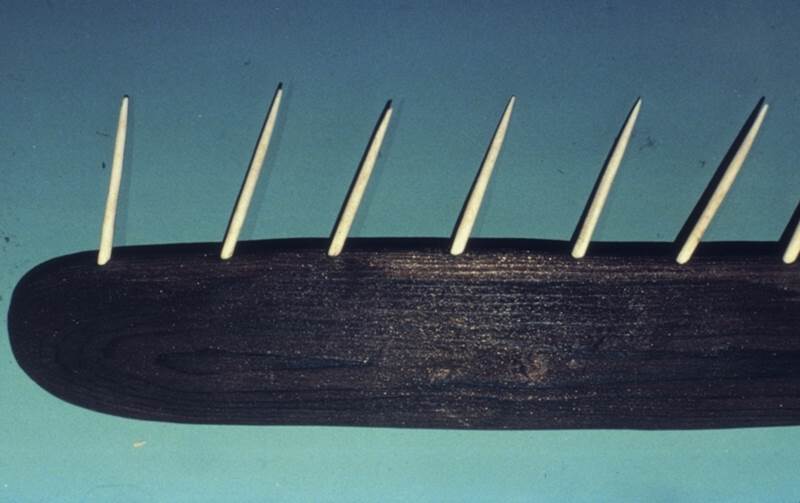
Using a Dip Net for Herring
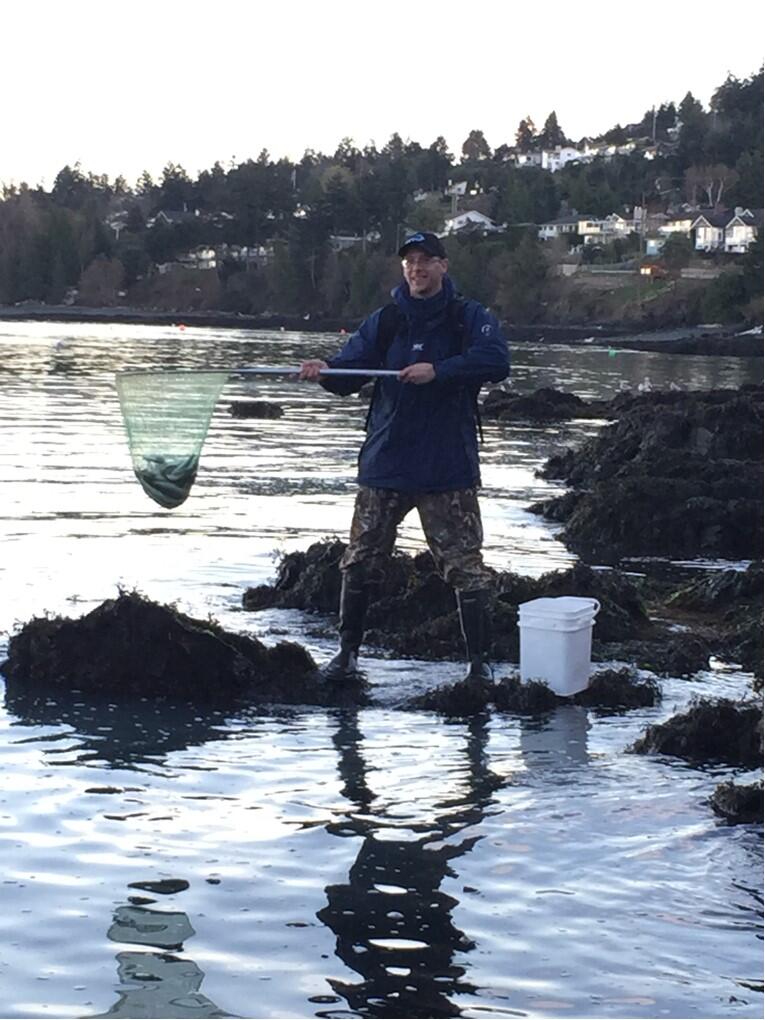
I also use fine mesh dip nets to catch herring, which seems to be more effective than jigging if the herring are shallow. I’ve found the best way is to simply hold the net in the water where I expect the herring to be. If the water is too cloudy to see into, I wait until I feel the herring bumping into the net and then lift it out of the water. I use a long-handled net with a small hoop. Trying to quickly dunk the net and scoop them doesn’t work. They react to the movement and dodge away. I’m told that throw nets don’t work for the same reason.
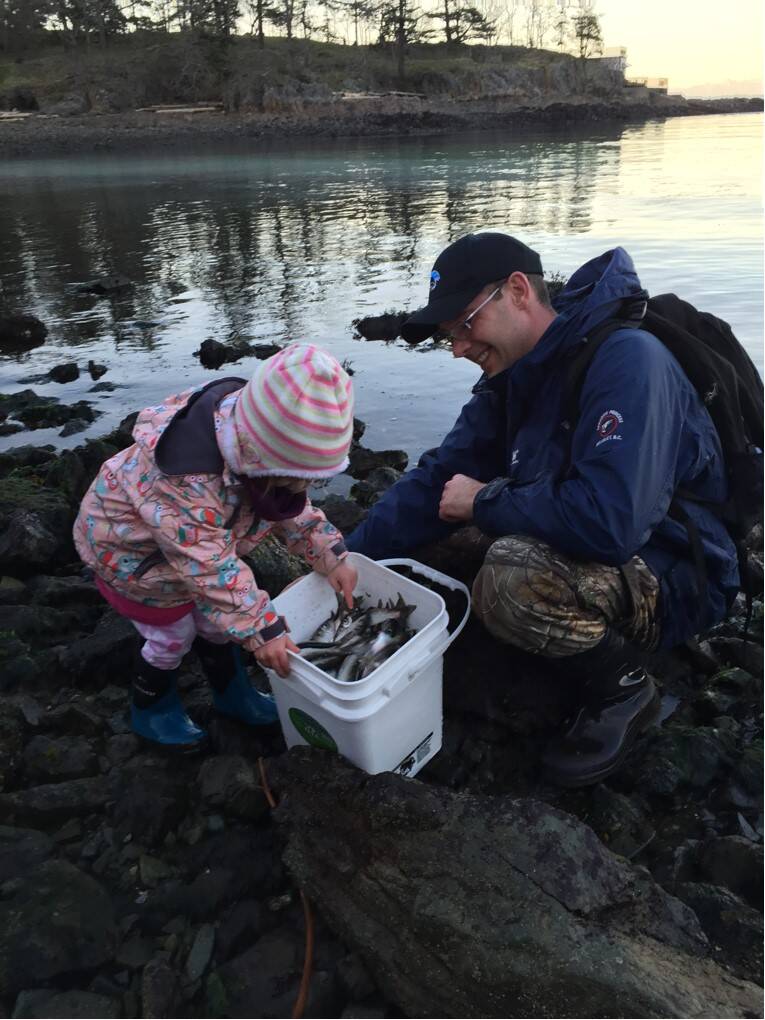
Herring for Human Consumption
While I started targeting herring just to use them as bait, my gastronomical curiosity eventually got the better of me. I’ll generally try to eat anything once. (On a side note, I don’t recommend fried pilchard.) And while I was familiar with kippers and rollmops, I had never tried herring eggs aside from the traditional native style of boiled roe on evergreen branches. I didn’t enjoy the roe when served that way, but it may have been the freshness that was the issue. So, I decided to try cooking some fresh eggs myself.

It turns out that lightly fried herring eggs are absolutely delicious. While my lovely wife was very skeptical at first, she now sends me every March in search of our favorite spring delicacy. I generally just strip the roe sacks from the fish, fry them with garlic powder and butter and then serve on crusty bread. They can be frozen or salted to preserve them. Also, salting them overnight firms them up and makes them less sticky. They will stick to absolutely everything otherwise. I think there are still some from last year glued to the drain of my kitchen sink. The taste is very mild and reminds me of prawns.
I once tried grilling some of the herring themselves. After all, I like to use as much of any creature I harvest as possible. While not terrible, grilled herring was not something I will try again. The flavor was not bad, but the flesh of spawning season herring seemed soft and unappealing. Perhaps smoked as kippers might be a better choice. It is also worth noting that my hound dog’s favorite treat is a frozen whole herring popsicle. It does wonders for his coat, if not his breath.
Either way, every spring I will continue to search for a herring spawn and anticipate my annual dinner of herring roe. And if I don’t eat the herring myself, I can always use them as bait for other tasty seafood.


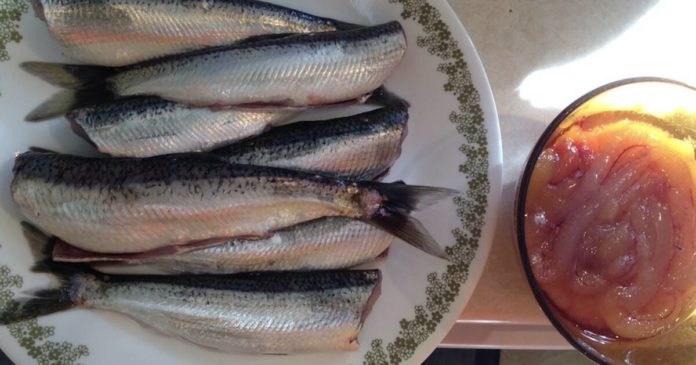




Great read!
Was nice chatting with you in shop today about this. You were very helpful and enthusiastic. Really appreciate the guidance and looking forward to chatting again
Cheers
where does one get smoked herring, please?
Hi, I am wondering as a first timer for fishing herring, On my bucket list is to fish herring and pickle/can it, as I personally love it and my dad. I used to live in Victoria, BC and always saw fishermen jigging, netting for herring as far as I know…. Is there any advice for me for what to use for bait? I’ve read a few articles about the spawning happening a bit earlier in March on the west coast? Anyway, any advice would be appreciated, thanks
Hey Steve,
I found a vintage herring rake in my garage. The house was built in the early 50’s and we purchased it from the original owner. We also found whale oil and lead paint so apparently he liked to hold on to things. The only other herring takes I can find online are in the possession of the archives of the University of Washington and the University of British Columbia.
To think, I almost gave it away on Facebook!
I grew up in a fishing village in Co. Down N. Ireland. One of its major industries was creating kippered herring. Herring fillets were soaked in carrot juice and smoked for hours over smoldering oak . The season there was mid September when hundreds of small skiffs took to the sea each with their masthead light, shot their nets and waited till dawn to return to harbour. I remember seeing some coming in with only inches of freeboard. The sight of this hugh collection of lights often caused newcomers to wonder how to get to the new town.. During World War 1 a German submarine surfaced among the fleet and using it gun played havoc. Sadly I believe it is all gone. I still have a yen for herring kippers and have been overjoyed to discover last week one of our supermarkets to have canned Kippers.